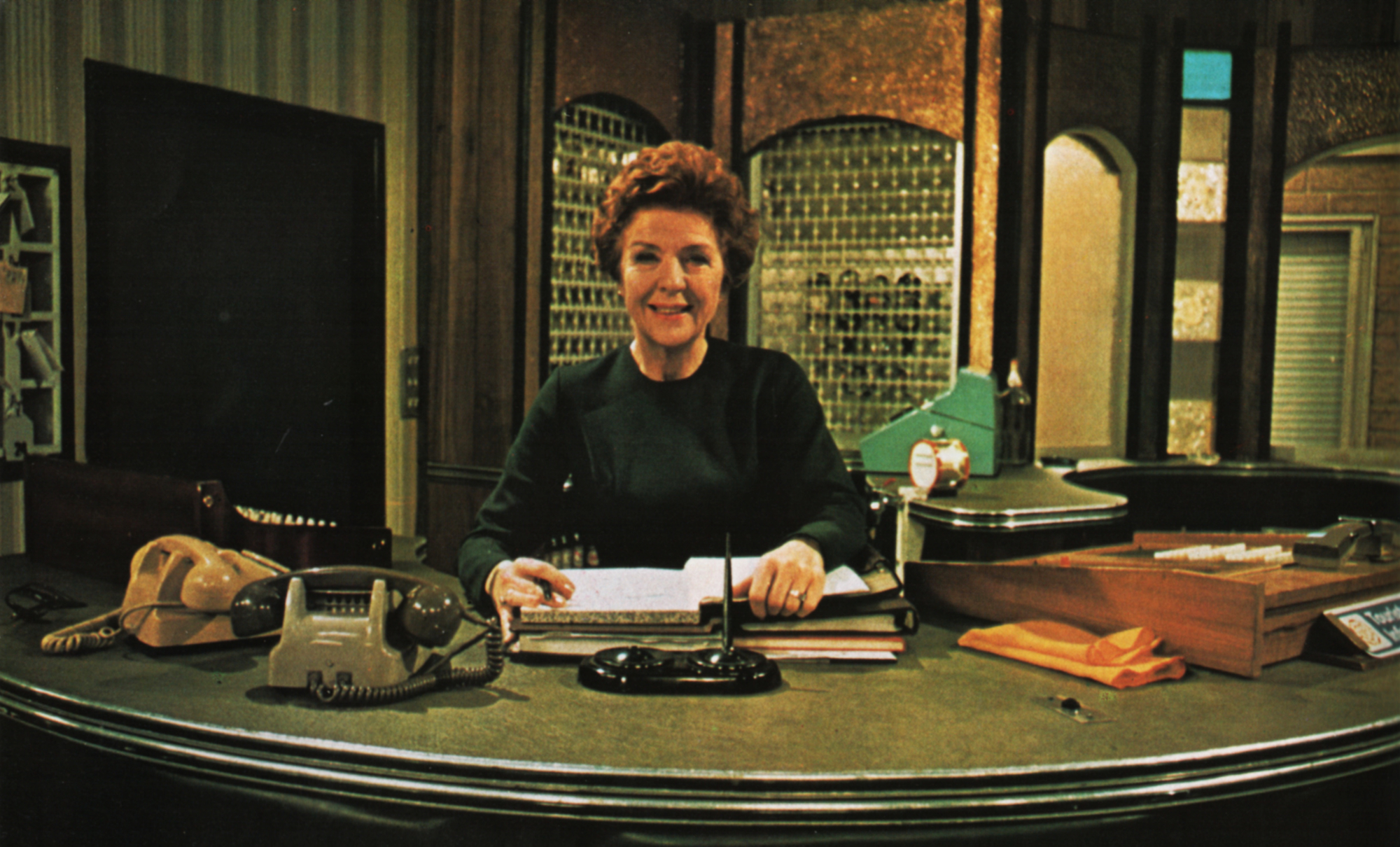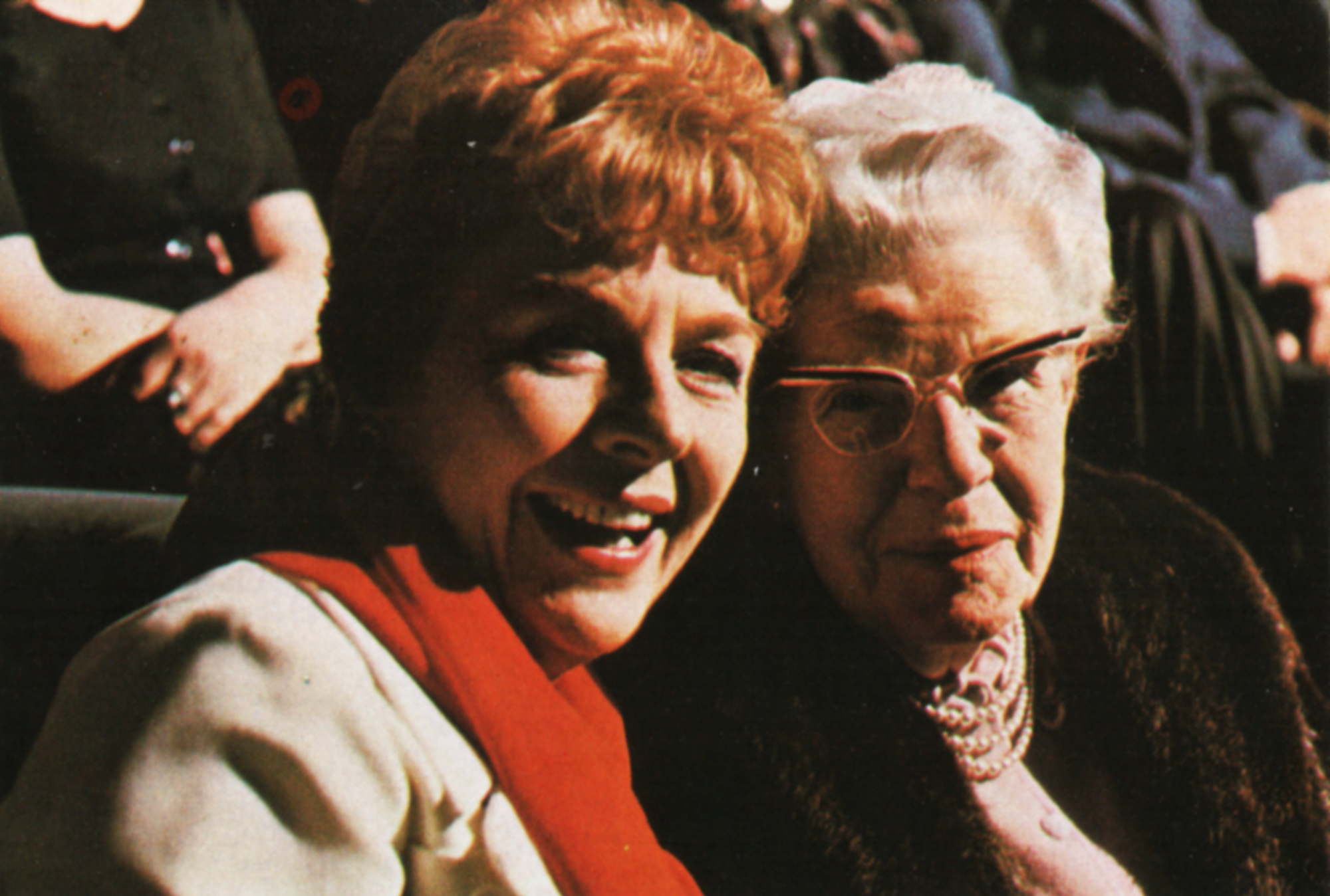
To its thousands of admiring fans there does not seem a time when Crossroads did not exist, it has been part of their lives for so long. But in fact the first episode of Crossroads took place in November 1964, several years after the idea of a daily serial had been put to Sir Lew Grade.
Lancashire already had its Coronation Street and viewers could see life in a hospital in Emergency Ward 10. Now it was felt that the time had come to give the Midlands their own show, set in the Midlands area itself. But what was the Midlands? It covered Swindon and Stoke and the famous Black Country, but it also extended south to Oxford, covered the borders of Anglia as well as parts of Yorkshire and Lancashire.
Therefore a broader storyline than just the Midlands was needed to appeal to a wider viewing audience. Hazel Adair and Peter Ling had suggested a serial called The Midland Road, centred on a widow named Meg Richardson and her two children who had turned their family home into a motel.
Although the storyline appealed everyone, the title for the serial received a lukewarm reception, and so it was decided to run a competition in a Midlands newspaper asking for alternative suggestions. But none of the titles won official approval, and the prize offered in the competition was given to charity. Reg Watson then put forward several title suggestions himself and Crossroads was finally chosen as the most popular.

Everyone was sworn to secrecy until ‘the show got on the road’ and the leading roles were cast. Noele Gordon, who had been hostessing Lunch Box, was the ideal choice for Meg; she was already overwhelmingly popular in the Midlands and any show including Noele was sure of an excellent reception.
Although Noele now had a different role to play, Meg Richardson soon became her alter ego, and she became the centre and heart around whom the rest of the cast revolved . . . indeed, in time they actually began to call her affectionately ‘The Godmother’.
But Meg needed a family, and Crossroads needed a staff, and so the hunt was on for a cast which would work happily together.
Some of the behind-the-scenes searches had a true life plot that would have seemed ‘far-fetched’ in a fictional story. Jane Rossington, who came for an audition as Meg’s daughter, arrived somewhat distrait because her train was late, but still managed to talk her way into the coveted part.
Filling the part of Sandy, Meg’s son, was much more difficult. Teenagers up and down the country were interviewed but somehow that vital something was missing. Time was running out when one day a young boy walked into a script conference saying that a cleaner had sent him up the stairs to audition for the part of Sandy! He had just happened to be passing by in his lunch break although he was at drama school. He read the part of Sandy in a voice which can only be described as ‘uniquely croaky’ and that’s how Roger Tonge, a Birmingham student, became Meg’s son.
Gradually all the parts needed for the first episodes were filled, and among the cast when Meg officially opened Crossroads motel were her sister and brother-in-law, Kitty and Dick Jarvis, played by Beryl Johnstone and Brian Kent, the Rev Guy Atkins, played by veteran actor Arthur Ridley, Peggy Aitchison as Mrs Blundell the housekeeper, and Raymond Mason as George Petersham. Later episodes featured Sue Nicholls as Marilyn Gates, the blonde waitress at Crossroads, who later married the new vicar, Peter Hope, played by Neville Hughes.
Crossroads was filling with staff and customers, whose lives were to become of interest to thousands of viewers as the episodes went on . . . Meg’s motel had opened, and its fans hope that it will never close!





